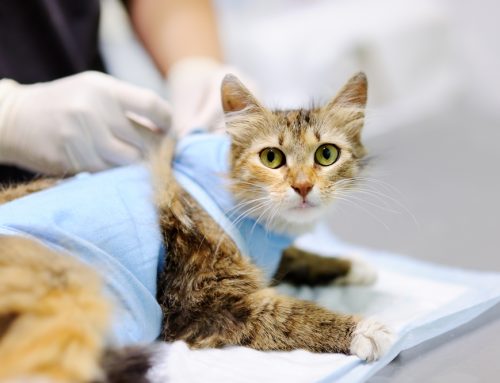Your pet cannot efficiently cool themselves by sweating, and instead, mostly relies on panting to circulate air through their mouth, to cause evaporation and cool themselves. This method alone is not sufficient when temperatures reach record-breaking numbers, which makes your pet vulnerable to heatstroke, a life-threatening condition that causes inflammation and cell death throughout your pet’s body.
Normal body temperature for your pet is 100 to 102.5 degrees, and if your adult pet’s temperature reaches 102.5 or above, they could be suffering from heatstroke, and need immediate veterinary attention. Signs include lethargy, excessive panting and drooling, difficulty breathing, vomiting, diarrhea, seizure, and collapse. Our team at El Paso Animal Hospital wants to help you keep your pet safe during these hot summer months, so we offer these tips to keep your pet cool.
#1: Keep your pet hydrated
Dehydrated pets are more susceptible to heatstroke. Provide several drinking water sources for your pet, and clean the bowls and refresh the water often. Pets left outside especially need copious amounts of water to prevent heat exhaustion. When taking your pet on excursions, bring bottled water and a water bowl, so you can frequently offer your pet a drink.
#2: Avoid strenuous pet exercise on hot, humid days
When exercising in extreme heat, your pet will have a difficult time cooling themselves effectively. Change your exercise routine to the cooler morning and evening hours, and take frequent breaks in shady areas to ensure your pet does not overheat. If you typically take your pet on runs, remember that they feel the heat more than you, and consider leaving them at home in hot and humid weather. Also, remember that asphalt can get extremely hot, and could burn your pet’s paws while you are walking or running. Stay on grassy or dirt paths whenever possible, or get protective booties for your pet’s paws.
#3: Find a cool space for your pet
Never turn your air conditioner off when you leave the house on hot days, because temperatures inside can get dangerously high for your sensitive pet. Certain pets, including those who are overweight, geriatric, or suffering from a heart or respiratory condition, are at higher risk from heatstroke and should stay indoors in the air conditioning on hot, humid days. Take them for brief bathroom breaks during the cooler times of day. Brachycephalic breeds, such as pugs, bulldogs, boxers, and Persian cats, are also at higher risk. Their facial structure inhibits air circulation when they pant, preventing appropriate cooling. They should stay indoors with cool air whenever possible, and be monitored closely when outdoors.
#4: Never leave your pet in a parked vehicle
Temperatures inside a parked vehicle can become dangerously high quickly. You may think your pet will be fine if left for only a short time, or if you have parked in the shade, but the consequences for your pet could still be deadly. A cracked window is not sufficient to protect your pet.
#5: Prevent sunburn with pet-appropriate sunscreen
Did you know your pet is susceptible to sunburn, especially if they do not have a lot of skin pigment? Ask one of our veterinarians if sunscreen would be helpful for your pet. Ensure you use a pet-appropriate product that does not contain zinc oxide or para-aminobenzoic acid. Apply the sunscreen to the areas of your pet most exposed to the sun, such as their nose, ears, muzzle, and inner thighs. Allow about 15 minutes for the sunscreen to be absorbed. Reapply sunscreen every four to six hours, and after water play.
#6: Frequent grooming will help your pet stay cool
The layers of a pet’s coat protect them from heat and sunburn. More frequent grooming may also help keep your pet cooler in the summer months by removing old and damaged hair to ventilate their coat. Grooming their coat also helps your pet’s skin breathe by removing excess oil that can block pores.
#7: Provide shade and water
If your pet has to be outdoors, set up a kiddy pool or sprinkler to help them cool down. Your pet will enjoy getting wet, and the cool water will prevent heat exhaustion. Also, ensure outdoor pets have ample access to shade, so they can get relief from direct sunshine.
#8: Keep your pet at a healthy weight

Since overweight pets are at higher risk for heatstroke, keeping your pet at a healthy weight can help prevent their susceptibility to overheating. Bring your pet in for regular wellness exams, to monitor for heart and respiratory issues that could also make them more vulnerable to heatstroke.
Heatstroke is a dangerous condition, but these tips will keep your pet cool, and help you safeguard them from any adverse heat effects. If you believe your pet is suffering from heatstroke, bring them to El Paso Animal Hospital for a quick assessment.







Leave A Comment